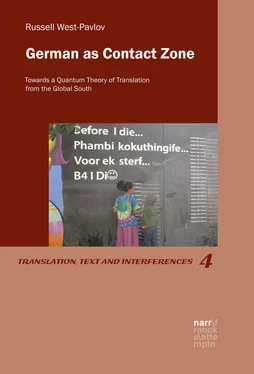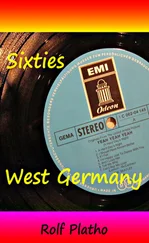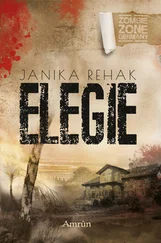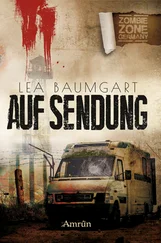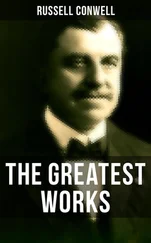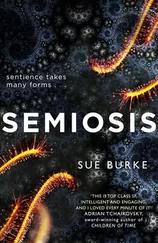1 The book reads German as a ‘contact zone’. This strand of theorization approaches the German language as a ‘pluricentric language’ and thus as an extroverted structure. It imagines German not as a singular entity but as a network of language s that is formed not from centre but rather from its peripheries, or suggests, alternatively, and more radically, that at its centre, the language is always already peripheral. The German language thus comes to be conceptualized not as a centripetal linguistic ‘Heimat’, but as a centrifugal meeting place, a contact zone whose tentacular expanse inevitably colours its putatively core regions. In Sissako’s film, one of these core-peripheral regions is East Berlin—a site that makes the national language (as once was) as an ineluctable zone of transition, negotiation, and of course translation. This, however, is only the first ‘provincialization’ of the German that we shall see at work here; it is caught in the tug of a larger, more fundamental ‘provincialization’ of language itself (Kohn 2013: 38-42), which is the gist of the second guiding idea.
2 The book suggest that linguistic translation is in fact a manifestation of ‘quantum’ processes, that is, the processes by which the entirety of material reality is on the move. Reality is not static, but is mobile and processual. At the smallest scales of the material universe, minute packets or ‘quanta’ of energy engage with each other, meeting in transformative encounters which ceaselessly generate new material structures. Out of each encounter a ‘translation’ ensues which becomes the next step in the dynamic process by which matter exists in a constant process of transformation. We must imagine something like Law’s (2007) ‘material semiotics’ in which actants interact with each other as meaning-bearing participants in transformative co-encounters that constitute a network of incessant translations. Translation is not a metaphor here, because each encounter actually is a transfer of information—a semiotic exchange—that transforms the (material) information itself and in turn perpetuates a transformation of the physical world: ‘One way to think of … a causal universe is in terms of the transfer of information … Each event is something like a transistor that takes in information from events in its past, makes a simple computation and sends the result to the events in its future’ (Smolin 2000: 55). Each quantum event is an encounter in which information is exchanged and changed, thereby provoking further change and further exchange.
3 Translation (in its minor, provincial interlinguistic sense) works in the same way as quantum processes, and this for two reasons. On the one hand, because it resembles those processes morphogenetically. This may appear to fly in the face of reason, because material processes and linguistic processes would seem to be fundamentally different from another, eschewing any possibility of comparison. But such fundamental differences are merely the attributions of a ‘separatist’ logic that is the hallmark of Enlightenment thought. This mode of thinking can be seen to emerge at the moment, for instance, when the topos of ‘copia’ gives way as a figure of thought to binary thinking (Ong 1958; West-Pavlov 2006: 57-9). From that moment on, the jumble of interrelated things cedes to a world of clear demarcations between this and that, here and there. Objects begin to emerge more clearly out of the distinctions that mark them off from other objects. Half a millennia of thought based upon the normative notion of discrete entities and concepts makes it almost impossible to think in terms of an interrelatedness of all things—a notion, however, that the massive, and increasingly terrifying evidence of climate change is slowly bringing back into the forefront of our consciousness. Isomorphic processes resemble each other, and are linked. Translation does not merely transfer a text from one domain to another, as the ‘transport’ metaphor suggests, because original and translation are not the same object. Rather, the entry of the text into another space involves an encounter between two cultures that generates a new text and thereby transforms the ambient cultural environment, contributing to its ongoing life. Thus, translation as a general linguistic operation, which the first argument located within, rather than only at the borders of the German language, is itself a subset of a broader cosmic process of material information exchange and ensuing reciprocal transformation at the adjacent borders of living entities. This broader cosmic process operates from the quantum level upwards, all the way to that of the universe itself, so that in effect it is coeval with the dynamic of life itself. Whence the second reason for the linkage between material processes and translation. They are linked concretely because they are fundamentally part of the same reality. One could cite manifestations of this idea of environmentas a base mode of connectivity across a range of disciplines and genres of thought. At one end of a spectrum of ‘scientificity’, contemporary Indigenous philosophies conceive reality as a single continuum of interactions: ‘Animacy … is the dynamic, transformative potential of the entire field of relations within which beings of all kinds, more or less person-like or thing-like, continually and reciprocally bring one another into existence’ (Ingold 2011: 689). At the other end of that spectrum, contemporary science is similarly characterized by a wide variety of field theories that have imposed the networked view of physical reality (Capra and Luisi 2014; Hayles 1984). Such ideas demonstrate the pervasiveness of notions of the infinite interconnectedness of the material world as a whole. Thus, material transformations are related to each other in a ‘fractal’ manner; they are isomorphic with one another in their operations at differing scales of reality because they are linked to each other by a myriad of intervening processes; across these fractally similar processes, translation produces transformation but also displays invariance.
4 Far from being an invention of European mathematics (Mandelbrot 1983), ‘fractal’ multiscalar replication and productivity is at the heart of much indigenous design from the Global South, ranging from textiles to architecture (Eglash 1999; see also Zaslavsky 1973). As my inaugural and terminal examples, all my case studies, and the provenance of much of my theoretical material suggests, the Global South plays a central role in driving the impetus of this integrative, anti-segregative project of quantum translation. De Souza Santos (2014: 223) sums up neatly by saying, ‘The modern history of unequal realtions between the global North and the global South is such that questioning and challenging the contact zone as it presents itself must be the first project of translation.’ The Global South has been, already well before the incursions of European colonization and at the very latest during the long imperial epoch, a ‘contact zone’ between cultures and their attendant epistemologies, as Pratt’s (1991, 1992) work on South America shows. The inclusive, eclectic and even promiscuous cosmic communities envisaged by non-European epistemologies and ontologies persisted in the interstices of European ‘epistemic violence’ (Spivak 1999: 277) and provide fundamental impulses for a notion of translation that is integrated into the ceaselessly transformative dynamics of the cosmos itself.
Bringing together these four central ideas, the notion of the ‘contact zone’, which I take from Pratt (1991, 1992), serves as a common denominator between these levels of dynamic, productive, and transformative interaction. Each quantum event that occurs as the dynamic building block of material reality is a ‘contact zone’ between two or more quanta of gravity. Without the interactions between quanta, there would be no world. In fact, there is no world before these interactions occur; the world emerges out of these interactions. Relation precedes material existence. Pratt’s (1992: 7) definition of the ‘contact zone’, though pitched at the human scale and context of colonial and postcolonial encounters, neatly replicates the constitutive nature of such interactions already active at a much smaller scale: ‘A “contact” perspective emphasizes how subjects are constituted in and by their relations to each other. It treats [such] relations … not in terms of separateness or apartheid, but in terms of copresence, interaction, interlocking understandings and practices.’ Every act of interlingual translation between two linguistic-cultural domains takes place in a specific local ‘contact zone’ made up of its own material contact zones. Finally, the entirety of a language can be imagined as a ‘contact zone’ of ‘contact zones’, an immense fabric of acts of dialogical interaction between speakers whose use of the language is inevitably different from one another—from the minute variations of idiolects to the opacity of dialects or major language variants to one another. A ‘contact zone’ emerges at every point on a multiscalar material reality at which an exchange of information takes place between dynamic actants, with transformative, generative results. Better than anywhere else, the epistemologies and the translative practices emanating from the Global South demonstrate an intuitive understanding of such all-embracing ontologies of transformation.
Читать дальше
